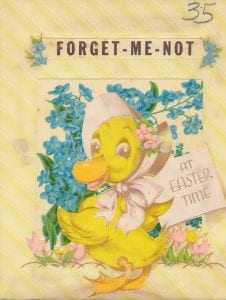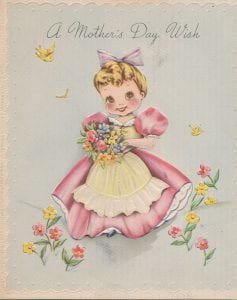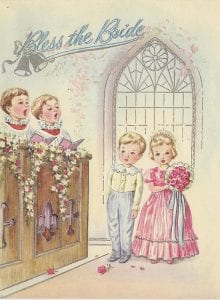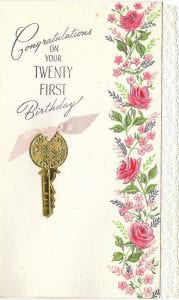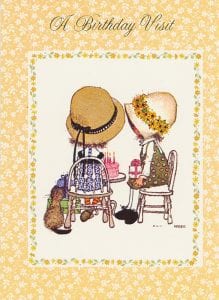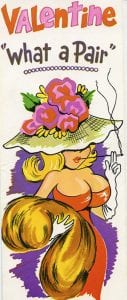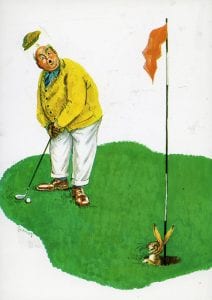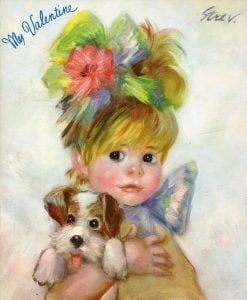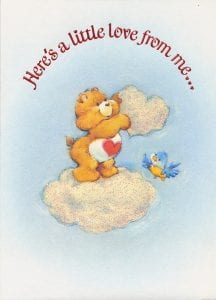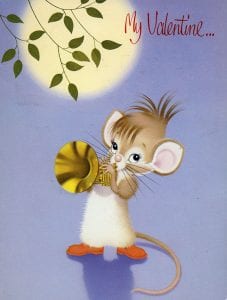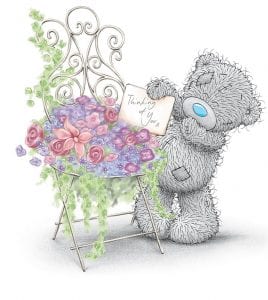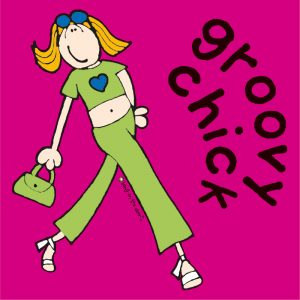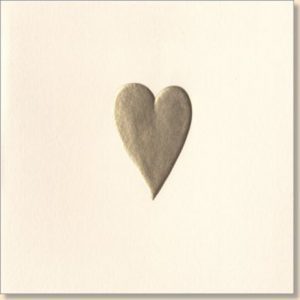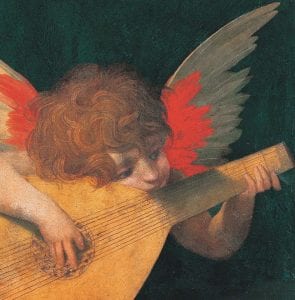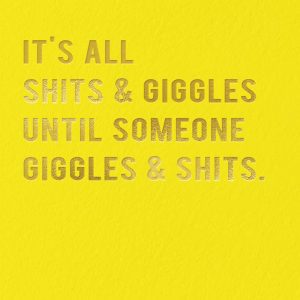In 2019 the Greeting Card Association celebrated it’s Centenary. As part of our celebrations we gathered together this collection of greeting cards from the last 100 years. This collection is available as an exhibition for GCA members to borrow.

Cards are a social history record
UK greeting card consumers spend in incredible £1.7 billion on greeting cards in the year that we celebrated our Centenary, according to the GCA annual Greeting Card Market Report for 2019, with Brits sending more cards per capita than any other nation. Greeting cards remain a champion product for high street retailers, with 94% of them bought in ‘bricks and mortar’ shops, and equally encouragingly, Millennials (18-34 year olds), the so-called ‘digital generation’, are sending more cards than their previous generation.
The UK greeting card publishing sector is a vibrant creative world, encompassing a host of small start-ups, many thriving entrepreneurial businesses and a few notable multi-nationals. Collectively, the card ranges they produce are the envy of the world, accepted global leaders in greeting card design and innovation, drawing on the production expertise of dedicated suppliers to bring their creative prowess to market.
Cards are a great social history record, with designs reflecting the times in which they were sold. Over the last 100 years millions of cards have been published, each one appropriate to the social social environment of it’s time. In this article we give a glimpse of how these designs have changed over the last century.
Choose a decade…
Greeting cards in the 1920’s
In the 1920’s greetings postcards were more the order of the day than ‘folded cards’, partly as they were cheaper to post. Different finishes and relations captions were coming to the fore.
Greeting cards in the 1930’s
The 1930’s saw a revival in wood-engraving, new fonts, a touch of glamour and as well as cartoon humour.
Greeting cards in the 1940’s
Due to wartime shortages, ‘French fold’ paper cards were popular as they used lightweight paper, but for those pushing the boat out, there were additional elements, such as satin padded elements, feathers and tip-ons.
The importance of greeting cards was highlighted by the Minister for Supply, Lord Beaverbrook, declaring “Greeting cards are considered essential to the war effort”, and over-turning the ban imposed early at the start of the Second World War that no greeting cards could be published in order to conserve paper. The GCA at the time had made the strongest possible representation to Lord Beaverbrook on the grounds that the morale of the fighting forces, as well as that of the general public, would be negatively affected by the ban. Taking this on board, the government rescinded the ban. What’s more, the GCA was given the responsibility of allocating the paper and board to those in the card trade right up until rationing restrictions were lifted after the end of the war.
Greeting cards in the 1950’s
The growing affluence in the 50’s saw the printed colour being cranked up and a bit more fun on the designs. Also there was a growth in privately commissioned Christmas cards for individuals, and corporate Christmas cards were also embraced – take a look at the Carling Breweries corporate Christmas card below featuring The Queen & Prince Philip.
Greeting cards in the 1960’s
New breeds of illustrative cute brands, humorous and nostalgic art was being fuelled by a growing number of card publishers coming on the scene.
Greeting cards in the 1970’s
Designs were getting bolder, colour more saturated and images printed on acetate overlays were all the rage.
Greeting cards in the 1980’s
The real dawning of ‘small house publishers’ brought a wider than ever choice for the growing number of greeting card retailers.
Greeting cards in the 1990’s
The 1990’s brought more design innovation and new characters into greeting card displays. There was a consumer and retailer thirst for off-beat humour, identifiable brands, statement captioning met by an explosion of publishers and their offerings.
Greeting cards in the Noughties!
This is the era of square cards, contemporary sentiment and sophisticated handmade ranges, while improvements in technology, both for print and design purposes are used to the full.
Greeting cards in the 2010’s
Digital printing, neon inks, typographic foils on bold backgrounds, positive vibes, animals galore, gin and prosecco add to a heady cocktail of publishers and card styles.
Exhibition available for members to use
This exhibition is available for members to borrow. It is displayed as two gorgeous screens, are each supported by a metal frame, which packs down, a bit like a tent, into a sturdy canvas carry case. Packed up the case is 80 x 32 x 22cm, for more information on the background see our blog https://www.gca.cards/100-years-of-card-the-gcas-100th-anniversary-exhibition/
More on the History of Greeting Cards
See the GCA’s series of History Blogs for more on the history of our wonderful industry and the occasions we celebrate.
Greeting cards continue to grow as a popular way to communicate and convey sentiment. Take a look at the gallery on our Thinking Of You website for lots of new and innovative cards.









